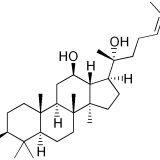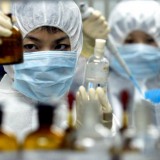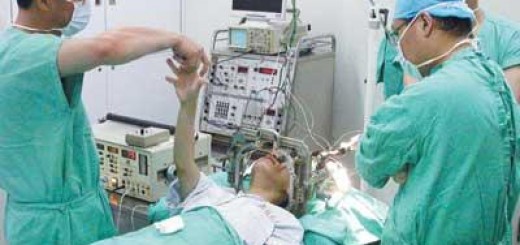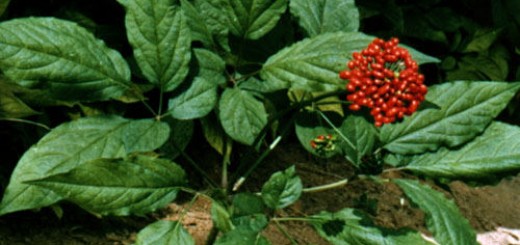There are two types of lung cancer: small cell lung cancer (also known as oat cell cancer or small cell cancer) and non-small cell lung cancer.
Small-cell cancer is a type of highly malignant cancer that most commonly arises within the lung. As the name implies, the cells in small-cell carcinomas are smaller than normal cells, and barely have room for any cytoplasm.
In limited-stage disease, median survival with treatment is 14–20 months, and about 20% of patients with limited-stage small-cell lung carcinoma live 5 years or longer. Because of its predisposition for early metastasis, the prognosis of small celll lung cancer is poor, with only 10% to 15% of patients surviving 3 year.
Dammarane sapogenin PPD (protopanaxadiol) has shown a potent cytotoxicity to a number of cancer cells, including recently found small cell lung cancer cells. The research was conducted on small cell lung cancer cell A549 and xenograft human small cell lung cancer model of nude mice. In cell culture study, PPD time- and dose-dependently induced cancer cell apoptosis, as confirmed by special TUNEL staining and flow cytometry. In animal model of xenografted human lung cancer, PPD administration inhibited cancer growth by up to 50%.
The findings suggest that PPD could be a new weapon in clinician arsenal for small cell lung cancer treatment.
The paper was published on the journal “Chinese Herbal Medicine”, 2008,(12)
Inhibition of 20(S)-protopanaxadiol on proliferation of lung cancer A549 cells and tumor growth of nude mice
Abstract:
Objective: To study the effects of 20(S)-protopanaxadiol(PPD) on the proliferation of human lung carcinoma A549 cell line and the tumor growth of nude mice.
Methods: Human lung carcinoma A549 cell line was treated with PPD. Cell growth rate was determined with MTT assay. The effects of PPD on apoptosis rate and cell cycle were observed by the flow cytometer. The subcutaneous transplantable tumor model of human lung cancer in nude mice was established. The tumor inhibitory rate was calculated to evaluate the anti-tumor effect.
Results: PPD could inhibit the proliferation of human lung carcinoma A549 cell in a time-and dose-dependent manner. The apoptotic peak was observed in the PPD groups with the apoptosis rate of 32.47%,32.75%,and 33.51% in 24 h, respectively. and PPD inhibited the growth of human lung carcinoma A549 cells in nude mice with the tumor inhibitory rate of 18.78%,34.37%,and 50.02%.
Conclusion: 20(S)-Protopanaxadiol could inhibit the proliferation of lung cancer A549 cell and the tumor growth of nude mice.













































